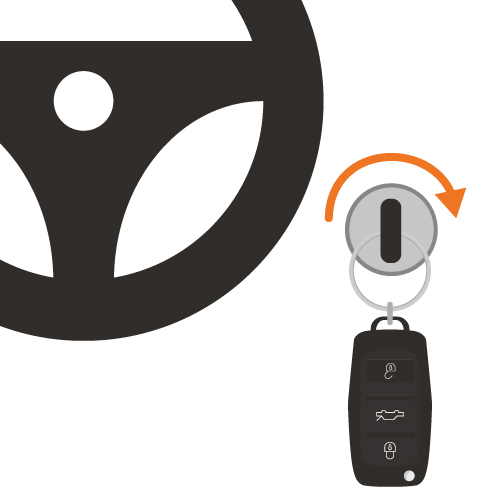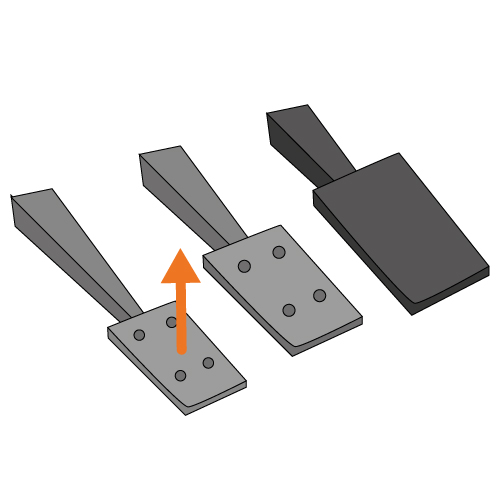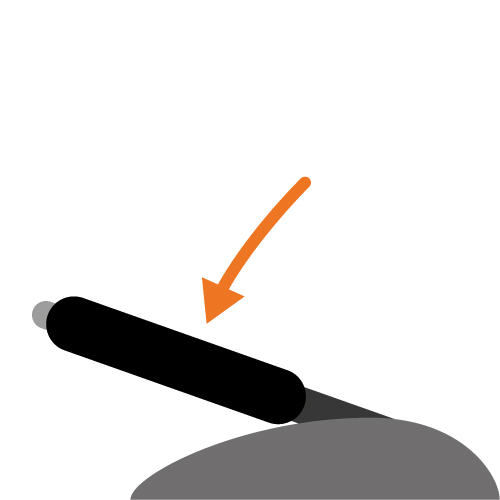
How to stop stalling your car
We think of stalling as a classic rookie driver mistake. But stalling your car can actually happen whenever you're nervous or distracted.
Lots of people pass their driving test and, as soon as they start driving alone, have a bit of a stalling phase. It's not because you can't drive; it's because you're so focused on not making a mistake.
What stalling is
To face down a fear, you first have to understand it. So - here's what's making you judder to an ugly stop when you stall your car.
Here's what causes stalling:
- Your engine needs a certain number of revs to keep ticking over (about 600 to 1,000 revs per minute)
- When you're at a standstill, your engine is running at about that rev count - cool, fine
- BUT if you let the clutch up too fast, the force of it will slow the revs to below what your engine needs to keep ticking over
- The engine doesn't get the revs it needs, so it cuts out - that's what 'stalling' a car means
How to stop stalling
Stalling itself isn't a problem as long as you know how to deal with it quickly and safely.
- When the car starts to judder, put your clutch and brake down - that could even save you
- If your engine does cut out, put your handbrake on to secure the car
- Turn your engine on again
- Find the bite, ready to go
- Do all-round observation including your blind spot
- Handbrake off - away you go

1. Clutch and brake down

2. Handbrake on

3. Engine back on

4. Find the bite

5. All-round observation

6. Handbrake off and pull away
The stalling scenarios
-
Stalling while you're learning to drive
Of course, while you're still learning, you're going to stall the car. It's a rite of passage for any learner driver.
There is SO MUCH to take in as you're learning to drive that it feels like you're having to do 100 things at once. Because you kind of are.
Don't give yourself a hard time about it. Your driving instructor is going to talk you through it when it happens and you'll be in a car that screams I'M A LEARNER, OK? People will understand.
What to do if you stall in your driving test
You're at the lights, hand on handbrake, all ready to go...then you stall on green. It feels like the end of the world but it really isn't. Your examiner knows people stall all the time, however long they've been driving. You handle it, keep going to the end and you may be absolutely fine.
The only reason you're going to fail your driving test for stalling is if you don't deal with it well. Forgetting your observation because you're flustered is the biggest risk so you need to keep your moving off mantra (Mirror-Signal-Manouevre) in your head all the time, just in case.
-
How to stop stalling when you're slowing down and about to stop
This is so easy to fix: put your clutch down. When you're going REEEEEALLY slowly (like, under 10mph), you'll need your clutch at biting point to stop the car stalling.
Try not to put your clutch down too early - you don't need it down at 20mph but after that you may want to prepare for stopping.
Being in the right gear for stopping (first) will also mean you're in the right gear for pulling away again. If you stop in a higher gear and forget, you're going to stall the car when you try to move off again.
How to avoid stalling while you're parking
Anytime you're driving really slowly, you're likely to stall the car if you don't use your clutch or you're in too high a gear. When you're parking, you'll be going very slowly to make sure it's safe and you can adjust the angle of the car as you need to.
If you're forward parking in a bay, you'll need to be in first gear and crawling forward - that means you'll need to have the clutch at the bite to keep yourself from stalling. You might not even need to use your accelerator - having your clutch pressed slightly down will mean you'll keep rolling.
If you're reverse parking into a bay or parallel parking, you'll be crawling in reverse gear. Again, that means you'll need your clutch at the bite so you're moving reeeeeeeally slowly but not letting your engine lose revs and cut out.
If you feel like you're about to stall, put the clutch down and use your foot brake to keep the car under control and don't forget your observation just because you're a bit thrown off.
Revise the parking manouevres you'll need for your driving test.
-
How to stop stalling when you're reversing
When you're reversing, you're probably moving very slowly to make sure everything's safe. But if you're not giving the engine enough revs, it's going to stall.
It feels a bit scary, but you do often need to accelerate gently as you're moving back - just a little bit to keep the car from stalling. Keep your clutch at the bite too, and you'll be fine.
Check out the manouevres you'll need to know for your driving test.
-
How to stop stalling when you're pulling away
If you're staling as you're moving off, you're either in the wrong gear or you're letting the clutch up too quickly. You need to let the clutch up as gradually as you accelerate - very! It should be a smoothy-smooth action.
If you're stalling at junctions it's probably because you're nervous of pulling out into traffic. You see a gap and want to GO GO GO, so you bring the clutch up too quick. You can even end up stalled in the middle of the road - and this happens to nearly everybody at some scary point. I watched my 35-year-old boyfriend do it just a few weeks ago.
The key here is: do your observation very carefully and don't pull out because you think people behind you are getting cross or you feel pressured by your examiner's watchful eye. Wait until it's safe, then you can focus on letting the clutch up gently as you accelerate, avoiding that awful stall.
-
How to stop stalling on hills
Man, this one's the worst. During your driving test and for a good long while after, you'll approach hills PRAYING for the traffic to keep moving. If there's traffic lights at the top - absolute panic.
I still stal on hills all the time. I've been driving 2 years now.
Hill starts are hard because you have to get the bite to perfection and use enough acceleration to fight gravity. Hill PAUSES are a nightmare.
- As you're approaching the place you'll be needing to stop, get a low gear early. It doesn't matter if that means you're climbing the hill slowly; that actually gives the traffic a chance to clear, so you're less likely to stop.
- When it looks like you'll definitely have to stop on the hill, make sure you're in first gear - clutch down, then gently up to the bite. This will keep you rolling very slowly until you need to stop.
- If you do have to stop, press the clutch down a whisker so you're not rolling forwards anymore; you're almost held by the clutch. Put your handbrake on so you're secure.
- When traffic starts moving again, take your handbrake off - you should still be held by that biting point. Then you just bring the clutch up that tiny bit to get rolling, and accelerate gently to set off again.
Here's my hill stall-avoiding process:
There's nothing wrong with stalling
As long as you deal with it the right way. Tell yourself over and over: everybody stalls sometimes, stay calm. The more you accept this, the less you'll flap when you do stall the car - meaning you'll deal with it quickly and safely, then get on your way.














